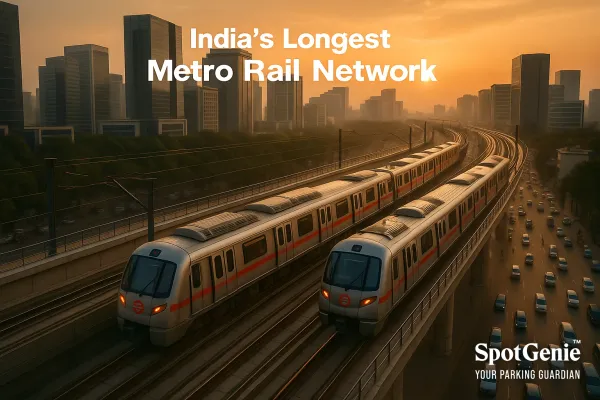SpotGenie Gyaan: Levels of ADAS, From Assistance to Autonomy (India 2025)
Ever wondered what “Level 2 ADAS” means on car brochures? Here’s a simple guide to the 6 levels of driving automation, from human-only to fully autonomous, and where Indian cars stand in 2025.

🧭 What Do ADAS Levels Mean for You?
If you’ve shopped for a car lately, you’ve seen it: “Now with Level 2 ADAS!”
But what exactly does that mean? Are Indian cars driving themselves? Not yet, but they’re learning fast.
In 2025, brands like Mahindra, Hyundai, MG, and Honda have brought partial automation to India. To understand how far we’ve come, and how far we can go, let’s decode the official SAE (0–5) levels of ADAS.
⚙️ The Six Levels of Driving Automation
| Level | Name | Control | Description | Example (India 2025) |
|---|---|---|---|---|
| 0 | No Automation | Driver | Traditional driving, no assist features beyond warnings. | Most budget hatchbacks (e.g. Alto K10, Tiago XE) |
| 1 | Driver Assistance | Shared | Single-assist like Cruise Control or Lane Keep Assist helps but doesn’t steer/brake fully. | Honda City e:HEV, Hyundai Verna 2025 |
| 2 | Partial Automation | Shared | Car can steer, accelerate & brake simultaneously under supervision. | Mahindra XUV700, MG Astor, Hyundai Tucson |
| 3 | Conditional Automation | System | Vehicle handles driving in specific conditions; driver must take over when prompted. | None in India yet (2025), testing phase |
| 4 | High Automation | System | Self-drives within geo-fenced zones, human optional. | Global pilot projects only |
| 5 | Full Automation | System | Fully autonomous anywhere, no human needed. | Future vision, beyond 2030 |
🇮🇳 India’s ADAS Status, Where We Stand in 2025
According to SIAM Q3 2025, nearly 12 % of new cars sold in India include Level 1 or 2 ADAS features, up from 7 % in 2024.
Popular Level 2 ADAS models:
- Mahindra XUV700, Adaptive Cruise Control, Lane Keep Assist, Auto Emergency Braking
- MG Astor, Traffic Jam Assist, Speed Assist, Forward Collision Warning
- Hyundai Tucson / Creta 2025, Smart Cruise Control, Lane Follow Assist
- Honda City e:HEV, Collision Mitigation Braking System
- Tata Harrier EV (2025), Radar-based Blind-Spot Detection & Lane Departure Prevention
Coming Soon (2026)
- Kia Seltos EV, Toyota Camry Hybrid facelift with upgraded ADAS suite.
🧠 Why India Is Still at Level 2
- Complex traffic patterns confuse algorithms.
- Lack of lane discipline & road markings.
- Legal framework: no defined rules for autonomous responsibility yet.
- Driver trust: many users switch off ADAS features due to misunderstanding.
Yet, manufacturers are training systems for Indian conditions, using radar fusion instead of lane reliance to tackle real-world chaos.
🔍 Safety Impact, Data Speaks
MoRTH data (2025) shows driver error caused nearly 85 % of fatal accidents.
Early studies by Bosch India reveal ADAS-equipped cars can reduce low-speed rear collisions by up to 27 % and lane drift incidents by 33 %.
ADAS isn’t about replacing drivers, it’s about giving them a digital co-driver.
💡 SpotGenie View, Bridging Tech and Trust
Tech can assist, but awareness saves lives.
SpotGenie’s QR-based vehicle alert system empowers drivers to communicate instantly about hazards or incidents, complementing ADAS by adding the human layer of responsibility.
Together, human judgement + machine assistance = safer roads.
🔗 Further Reading
ADAS in India Explained (2025)
SUVs, Power Meets Presence (2025)
Tata Motors Passenger Vehicles Rename (2025)
Follow us on:
🅾 Instagram |
ⓕ Facebook |
𝕏 X |
▶️ YouTube |
🟢 WhatsApp



